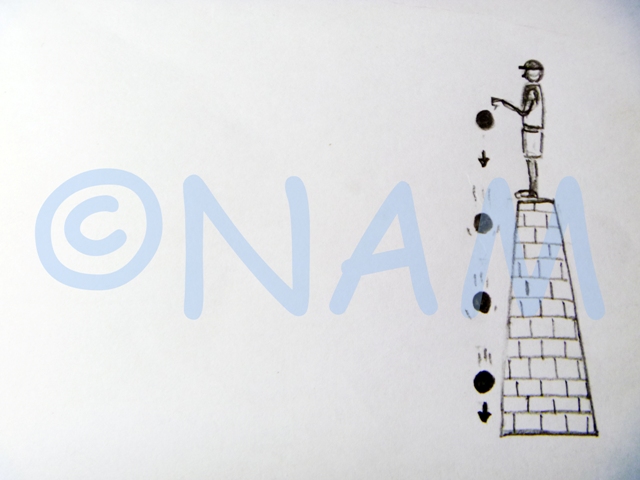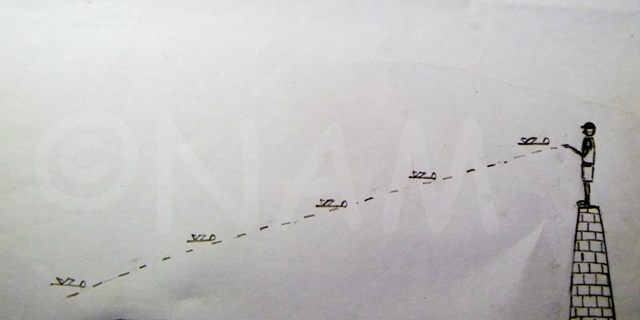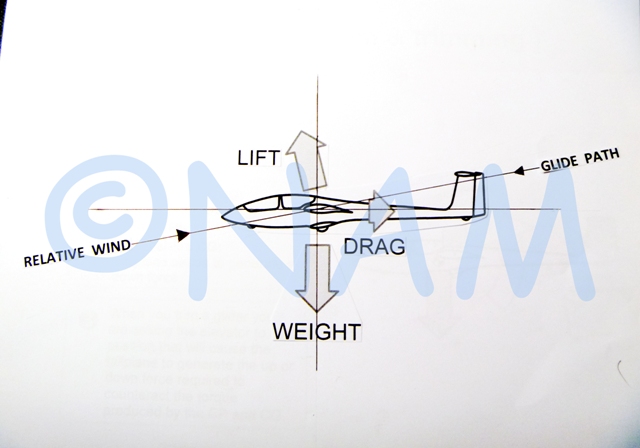
The Vanishing Art of ..... .Part 2, by Edward Perera
So far we have been able to get a Flight Duration of 30 secs. on our "Tiny" glider. The recorded duration of 35 secs. should be possible in the near future.
In this article I would like to explain about glider aerodynamics, touching the theory part a liitle bit.
In the following illustration it is shown when an object is lifted to a height, and thereby gaining Potential Energy (energy due to the position), can fall down gaining Kinetic Energy (energy due to motion).

The Illustration 2 shows that a glider will not fall down like the other object, instead it glides down smoothly.

In very short terms it could be explained that since the glider is built aerodynamically it flew down to the ground. To find out more, let us move on to the next illustration.

The glider glides down on the Glide Path, (at a set speed depending on the weight) which is at an angle (angle of attack) to the horizontal line , and into the Relative wind, therby generating a lift at 90 degrees to the line representing the Relative Wind. As the Lift is formed in front of the verticle line, it helps to move the glider in a foreward direction, without stalling.
It may sound a bit complicated, but unless these basics are not understood, an advanced glider cannot be built and flown succsessfully.
Even though the glider we built looks small and sipmple, it is Trimed in such away that it could withstand the stress, when it is shot up (while being catapulted) vertically at some where round 90 mph, and still capable of gently glide down at a speed of approximately 9 mph.
When the basics are understood building and flying these wonderful gliders will not be difficuilt at all, in fact it will be really enjoyable. In the next article we will discuss about the methods of acheiveing the precise dimensions involved in the construction of the "Tiny Dip".
Have Fun! Happy Gliding!
Edward Perera.